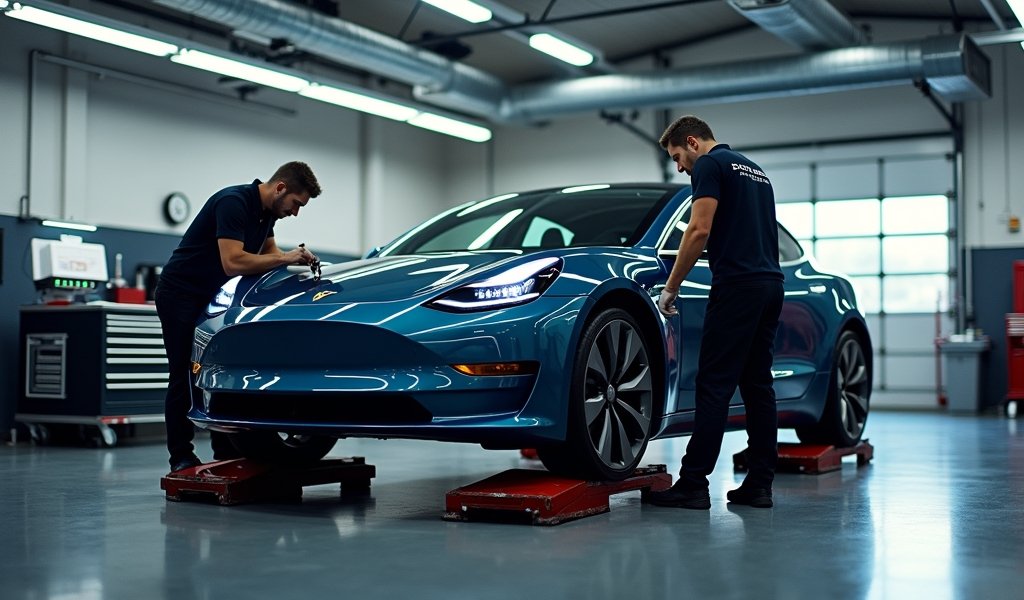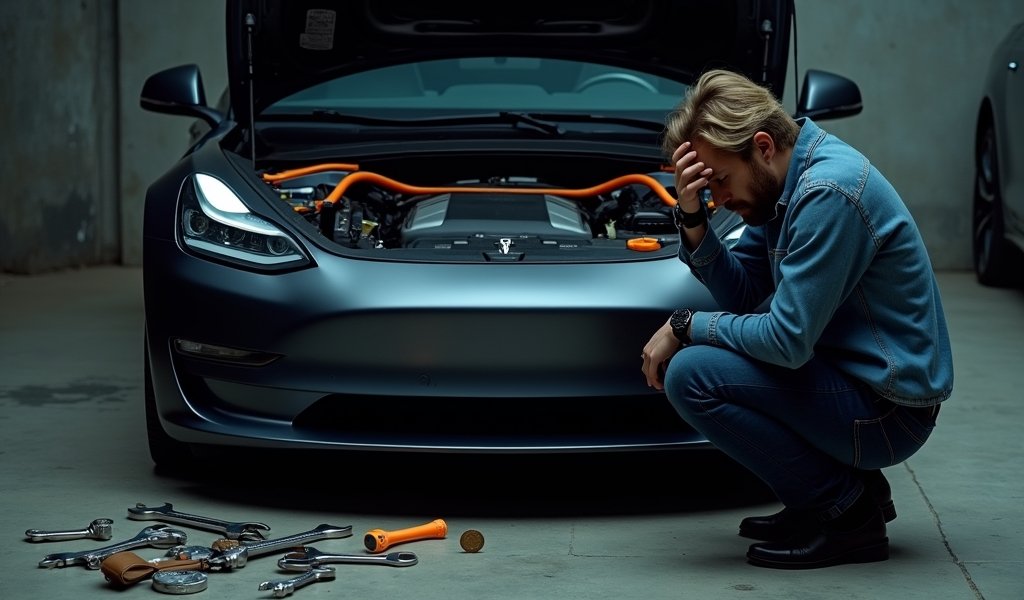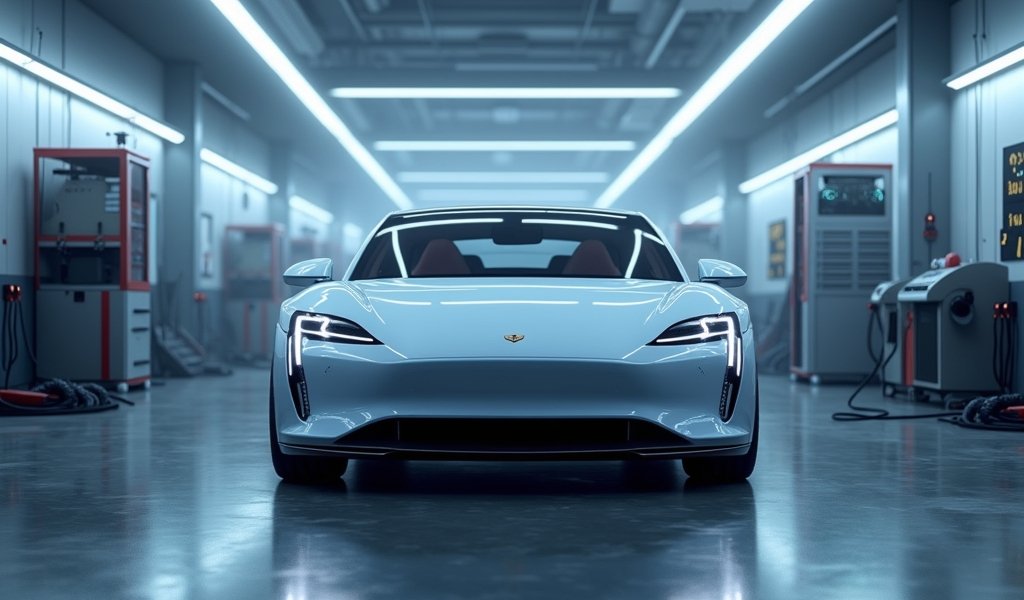Overview
Tesla vehicles have significantly lower maintenance costs compared to conventional luxury cars, with owners typically spending 60-80% less over five years due to the absence of oil changes, transmission services, and exhaust repairs. The primary maintenance needs include tire rotations every 10,000-12,000 miles, brake fluid tests every 2 years, cabin air filter replacement every 2-3 years, and occasional 12-volt battery replacement, with many tasks being DIY-friendly.
Table of Contents
- Understanding Tesla Maintenance: A Different Approach
- Essential Maintenance Items and Their Costs
- DIY Maintenance: Save Money Without Sacrificing Quality
- Long-Term Expenses: What to Expect Down the Road
- Finding the Right Service Provider for Your Tesla
- Conclusion: Is a Tesla Actually Cheaper to Maintain?
- Frequently Asked Questions
Understanding Tesla Maintenance: A Different Approach
When it comes to Tesla maintenance cost, there’s good news for owners – you’re looking at significantly lower expenses compared to conventional vehicles. As a mechanic who’s worked on both traditional and electric vehicles, I can tell you firsthand that Teslas have fewer moving parts and fluid systems that need regular attention.
The fundamental difference lies in the drivetrain. Without a combustion engine, you can say goodbye to oil changes, spark plug replacements, timing belt services, and exhaust system repairs. These routine maintenance items that plague traditional vehicle owners simply don’t exist in the Tesla world.
Tesla’s official maintenance schedule is refreshingly simple:
- Cabin air filter replacement: Every 2-3 years
- Brake fluid test: Every 2 years
- Tire rotation, balance, and alignment check: Every 10,000-12,000 miles
- Air conditioning service: Every 2-6 years depending on model
- Brake caliper cleaning and lubrication in winter regions: Annually
This minimalist approach translates to real savings. While traditional luxury vehicles might require $1,500-2,500 in maintenance annually, Tesla owners typically spend between $300-600 per year when averaged across ownership. That’s a potential 70-80% reduction in maintenance costs!
However, don’t mistake “low maintenance” for “no maintenance.” Skipping the recommended services can lead to more expensive repairs down the road. Let’s dive into what you actually need to budget for.
Essential Maintenance Items and Their Costs

After working on hundreds of Teslas, I’ve identified the core maintenance items that every owner should budget for. These aren’t suggestions – they’re essentials that protect your investment and ensure optimal performance.
Tires: Your Biggest Regular Expense
Tesla vehicles are heavier than their gasoline counterparts and deliver instant torque – a combination that can accelerate tire wear. Plan for:
- Tire rotations: $75-150 every 6,000-10,000 miles
- Tire replacements: $800-1,400 for a full set, typically needed every 25,000-40,000 miles
- Alignment checks: $100-200 annually or after hitting significant potholes
Pro tip: Consider investing in Tesla-specific tires designed for electric vehicles. They’re engineered for the added weight and torque, providing better longevity and efficiency. Some owners report getting an extra 5,000-8,000 miles from these specialized tires.
Brake System
Thanks to regenerative braking, Tesla’s physical brakes experience much less wear than traditional vehicles. However, they still require maintenance:
- Brake fluid flush: $100-175 every 2 years
- Brake caliper lubrication (in cold regions): $80-150 annually
- Brake pad replacement: $300-700, but typically only needed after 60,000-100,000 miles
Many Tesla owners report their original brake pads still having 70-80% of material left after 70,000 miles. That’s a stark contrast to conventional vehicles that might need brake service every 30,000-40,000 miles.
Cabin Filters and Climate System
Your Tesla’s air quality system needs periodic attention:
- Standard cabin air filter: $60-120 (parts and labor) every 2 years
- HEPA filter (if equipped): $130-200 every 3 years
- Air conditioning service: $150-300 every 4-6 years
These items ensure your Tesla maintains that “new car” feel inside while protecting you from outside pollutants. It’s a comfort expense that also preserves your vehicle’s value.
12-Volt Battery
Yes, Teslas still have a 12-volt battery system! This powers the vehicle’s electronics when the main battery is disconnected. Budget $200-400 for replacement every 3-4 years. When it fails, your Tesla will warn you well in advance through the app and dashboard alerts.
Compared to the average cost of car service for luxury vehicles, Tesla maintenance presents substantial savings. The typical luxury car owner might spend $7,500-12,000 on maintenance over five years, while Tesla owners report averages closer to $2,000-3,500 for the same period.
DIY Maintenance: Save Money Without Sacrificing Quality
One of the beautiful aspects of Tesla ownership is how many maintenance tasks you can handle yourself – even if you’re not particularly mechanically inclined. With some basic tools and a bit of patience, you can save hundreds over your ownership experience.
DIY-Friendly Tesla Maintenance Tasks
- Cabin air filter replacement: Save $40-80 with a 15-minute DIY job. Tesla provides clear instructions, and the filters cost just $15-30 online. All you’ll need is a screwdriver and a new filter.
- Wiper blade replacement: This 5-minute job saves $20-40 per service. Standard aftermarket wiper blades work fine, though OEM Tesla blades offer a perfect fit.
- Tire rotation: If you’re comfortable with a jack and lug wrench, you can rotate your tires at home. Just be sure to follow Tesla’s torque specifications (129 lb-ft for most models).
- Winter maintenance: Applying silicone lubricant to door seals and window tracks prevents freezing issues in cold climates. A $5 can of silicone spray can save you from potential door seal damage.
For helpful walkthroughs, the Tesla support website provides detailed maintenance guides with diagrams and specifications. YouTube has also become a goldmine of Tesla DIY content from experienced owners.
Tasks Best Left to Professionals
While DIY is great for basics, some tasks require specialized equipment or expertise:
- Brake fluid service (requires proper bleeding equipment)
- High voltage system components (dangerous and voids warranty)
- Air conditioning service (requires special refrigerant handling)
- Suspension component replacement (needs proper alignment afterward)
Remember, Tesla’s warranty remains intact when you perform standard maintenance yourself. Just keep records and receipts for parts purchased as evidence that maintenance was performed on schedule.
Long-Term Expenses: What to Expect Down the Road
As your Tesla ages, certain components will eventually need attention. Having worked with higher-mileage Teslas, I can share insights on what to expect beyond the basic maintenance schedule.
Battery Longevity and Replacement
The most common concern among prospective Tesla owners is battery longevity. The good news is Tesla’s lithium-ion batteries have proven remarkably durable:
- Battery warranty: 8 years/100,000-150,000 miles (model dependent) with minimum 70% capacity retention
- Real-world degradation: Most owners report 5-10% capacity loss in the first 100,000 miles, then much slower degradation afterward
- Replacement cost (post-warranty): $10,000-22,000 depending on model and battery size
Data collected by independent Tesla researchers shows that the average Tesla battery maintains over 90% of its original capacity after 150,000 miles. Most owners will likely never need a battery replacement during their ownership period.
Electric Motors and Drive Units
Tesla’s electric motors are engineering marvels with few moving parts. They’re covered under the same 8-year warranty as the battery. Post-warranty replacements are expensive ($3,000-7,000 depending on model), but failures are rare after Tesla resolved early production issues.
If you’re purchasing a used Tesla, request a full diagnostic report from a Tesla Service Center. For around $175, they’ll provide detailed information on battery health and drive unit condition, potentially saving you thousands in unexpected repairs.
Electronics and Touchscreen
The central touchscreen is Tesla’s command center, and replacing it costs between $1,500-2,500 out of warranty. Early Model S vehicles (2012-2015) had some screen failure issues that Tesla has addressed with an extended warranty program. Newer models have significantly improved reliability.
One advantage of Tesla ownership is major vs minor car service needs are less frequent and often less expensive than traditional vehicles. Where conventional cars might need $1,000+ major services at 30,000-mile intervals, Teslas simply don’t have the same mechanical complexity requiring such interventions.
Finding the Right Service Provider for Your Tesla

As Tesla’s popularity has grown, so have your service options. Choosing the right provider impacts both your wallet and your vehicle’s long-term health.
Tesla Service Centers: The Factory Approach
Tesla’s company-owned service centers offer several advantages:
- Direct access to Tesla parts and engineering support
- Latest diagnostic software and tools
- Tesla-certified technicians with model-specific training
- Over-the-air diagnostic capabilities
The drawback? As Tesla’s fleet has grown, service centers in many regions have become backlogged, with appointment wait times stretching to weeks for non-urgent matters. Costs at Tesla Service Centers are generally fair but not necessarily the lowest available.
Tesla Mobile Service: Convenience at Your Door
Perhaps Tesla’s most innovative service offering is their mobile fleet that comes to your home or workplace. Mobile service can handle roughly 80% of repair needs, including:
- Tire rotations and replacements
- Filter changes and basic maintenance
- Minor bodywork and paint touch-ups
- Software diagnostics and updates
- Most component replacements that don’t require a lift
Mobile service typically costs the same as service center visits but saves you valuable time. Schedule through the Tesla app for the most efficient experience.
Independent Tesla Specialists
As Tesla vehicles age out of warranty, a growing network of independent Tesla specialists has emerged. These shops often offer:
- 20-30% lower labor rates than Tesla Service Centers
- Shorter wait times for appointments
- Experienced technicians, often former Tesla employees
- More flexibility with aftermarket parts and upgrades
When choosing an independent shop, verify they have Tesla-specific diagnostic equipment and proper high-voltage safety training. A good independent shop will be transparent about their technicians’ qualifications and Tesla experience.
Traditional Service Centers
Most traditional mechanics can handle basic maintenance like tire rotations and cabin filter replacements. However, they typically lack Tesla-specific diagnostic tools and high-voltage safety training. I recommend using Tesla-specialized service for anything beyond the most basic maintenance items.
For the best balance of cost and quality, many experienced owners use this hybrid approach:
- Tesla Service Center for high-voltage or complex electronic issues
- Tesla Mobile Service for convenience maintenance
- Independent Tesla specialists for out-of-warranty repairs
- DIY for simple tasks like wiper and filter replacements
Conclusion: Is a Tesla Actually Cheaper to Maintain?
After working with hundreds of Tesla vehicles and comparing their maintenance records to traditional luxury cars, the verdict is clear: Tesla maintenance costs are substantially lower over the life of the vehicle.
The data shows that Tesla owners typically spend 60-80% less on maintenance during the first five years of ownership compared to owners of similar gas-powered luxury vehicles. This dramatic difference comes from eliminating oil changes, transmission services, exhaust repairs, and the dozens of other maintenance items that combustion engines require.
While the purchase price of a Tesla may be higher than some traditional vehicles, the reduced maintenance costs contribute significantly to a lower total cost of ownership. When combined with fuel savings, the economic advantage becomes even more pronounced over time.
The key takeaways for minimizing your Tesla maintenance costs are:
- Follow Tesla’s recommended maintenance schedule – it’s minimal for a reason
- Rotate your tires regularly and maintain proper tire pressure
- Consider DIY for simple maintenance items like filters and wipers
- Use Tesla Mobile Service when available for convenience and factory-quality work
- Research independent Tesla specialists for out-of-warranty repairs
By following these recommendations, you’ll not only keep your Tesla in peak condition but also maximize the financial benefits of electric vehicle ownership. The simplicity of Tesla maintenance represents one of the most overlooked advantages of making the switch to electric.
Remember that proper maintenance not only saves money but also preserves your Tesla’s performance, range, and resale value. The small investments in regular tire care, fluid checks, and filter replacements pay dividends in the long-term reliability and enjoyment of your vehicle.
Frequently Asked Questions
How much is a Tesla annual maintenance?
Tesla annual maintenance typically costs $200-400 on average, primarily covering tire rotations and basic inspections. This is significantly lower than the $600-1,200 annual maintenance cost of comparable luxury vehicles.
Do Teslas require oil changes?
No, Teslas do not require oil changes because they have electric motors with no internal combustion components. This eliminates one of the most common and recurring maintenance expenses of traditional vehicles.
How often do Tesla brakes need replacement?
Tesla brakes typically last 60,000-100,000 miles before needing replacement, roughly twice as long as conventional vehicles. Regenerative braking reduces physical brake pad wear by using the electric motor to slow the vehicle.
How much does it cost to replace a Tesla battery?
A Tesla battery replacement costs between $10,000-22,000 depending on the model and battery size. However, Tesla batteries are warrantied for 8 years and most owners will never need a replacement during their ownership period.
Can any mechanic service a Tesla?
Basic Tesla maintenance like tire rotations and wiper replacements can be done by any mechanic. For electrical systems, battery issues, or complex repairs, Tesla-specific training and diagnostic equipment are essential for proper service.

